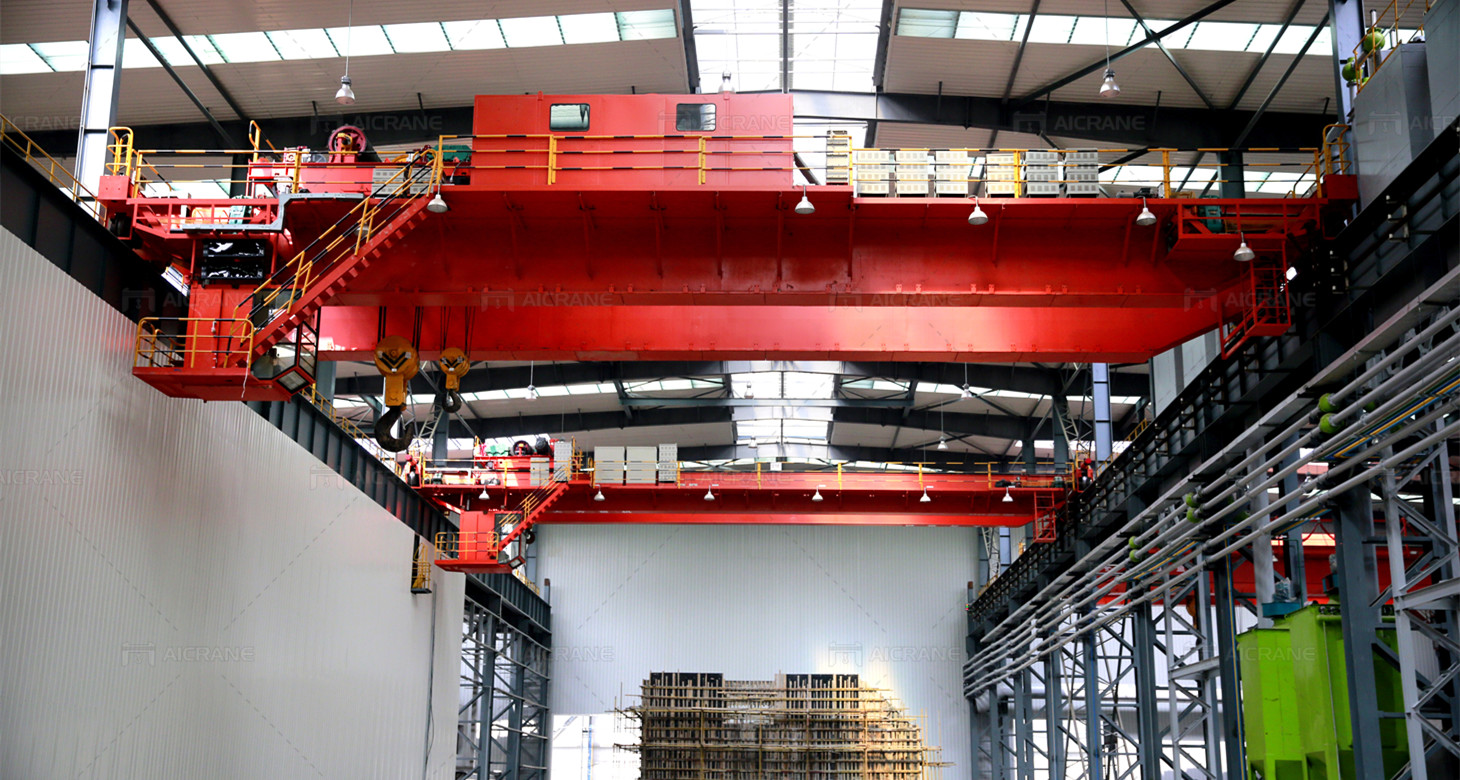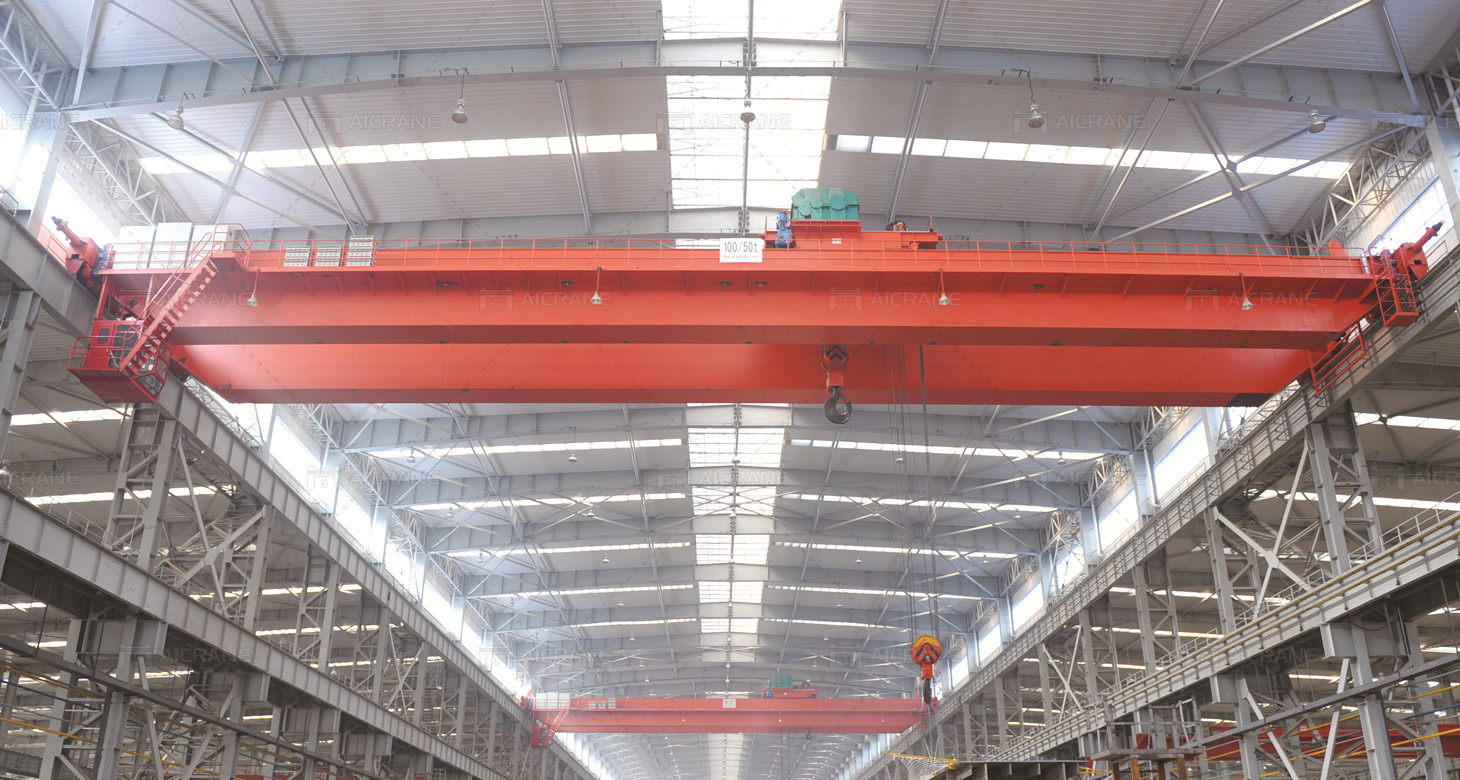Choosing a suitable overhead crane with a lifting capacity of 100 tons requires careful consideration of various factors, including the application requirements, site conditions, safety standards, and budget constraints. An overhead crane is a critical piece of equipment used in industrial settings for lifting and moving heavy loads, and selecting the right crane for your specific needs is essential for efficient and safe operations. Here are the key steps and factors to consider when choosing a suitable overhead crane with a capacity of 100 tons:

Understand Application Requirements
Begin by understanding the specific requirements of your application. Consider factors such as the type and weight of loads to be lifted, the frequency of lifts, the required lifting height and span, the operating environment (indoor or outdoor), and any special features or functions needed (such as precision positioning or hazardous area operation).
Lifting Capacity and Span
Determine the required lifting capacity, which in this case is 100 tons, and the span of the heavy duty crane (distance between the runways or support structures). Ensure that the crane’s capacity and span match the requirements of your lifting tasks, taking into account potential future needs for load increases or changes in the operating environment.
Crane Type and Configuration
Choose the appropriate type of overhead crane based on your application requirements. Common types include single girder, double girder, and gantry cranes. Consider factors such as headroom clearance, hook height, and the available space for crane installation. Determine whether a top-running or under-running configuration is suitable based on the building structure and layout.
Hoisting Mechanism
Select the hoisting mechanism that best suits your needs. Options include wire rope hoists, chain hoists, and electric hoists. Consider factors such as lifting speed, precision control, duty cycle, and maintenance requirements when choosing the hoisting mechanism.

Trolley and Bridge Configuration
Choose the trolley and bridge configuration that meets your lifting and movement requirements. Options include single-speed or variable-speed trolleys, manual or motorized bridge travel, and options for multiple hoist arrangements (such as tandem hoists or synchronized hoisting).
Control System
Select a control system that provides safe and efficient operation of the overhead crane. Options include pendant controls, radio remote controls, and cabin controls. Consider features such as load monitoring, anti-sway technology, collision avoidance systems, and integration with other automation systems.
Safety Features
Prioritize safety by selecting an overhead crane with robust safety features. Look for features such as overload protection, emergency stop buttons, limit switches, safety brakes, warning lights or alarms, and comprehensive operator training programs. Ensure that the crane complies with relevant safety standards and regulations.
Environmental Factors
Consider the operating environment and any environmental factors that may affect overhead crane performance. This includes temperature extremes, humidity, corrosive substances, dust or debris, and potentially hazardous atmospheres. Choose a crane with appropriate protective measures, such as corrosion-resistant coatings, IP-rated enclosures, and explosion-proof components if needed.
Maintenance and Service Support
Evaluate the manufacturer or supplier’s reputation for reliability, quality, and after-sales support. Choose a crane provider that offers comprehensive maintenance programs, spare parts availability, technical support, and training for operators and maintenance personnel. Consider factors such as warranty coverage and response times for service calls.
Budget and Total Cost of Ownership
Finally, consider your budget constraints and the total cost of ownership (TCO) of the overhead crane. Evaluate the initial purchase price, installation costs, ongoing maintenance expenses, energy consumption, and potential productivity gains or cost savings from improved efficiency and safety. Balance your investment with the long-term benefits and ROI of choosing a high-quality and suitable overhead crane.
In conclusion, choosing a suitable 100 tons overhead crane involves a systematic assessment of application requirements, crane specifications, safety features, environmental factors, and budget considerations. By following these key steps and factors, you can make an informed decision and select the right overhead crane to meet your lifting and material handling needs effectively and safely.